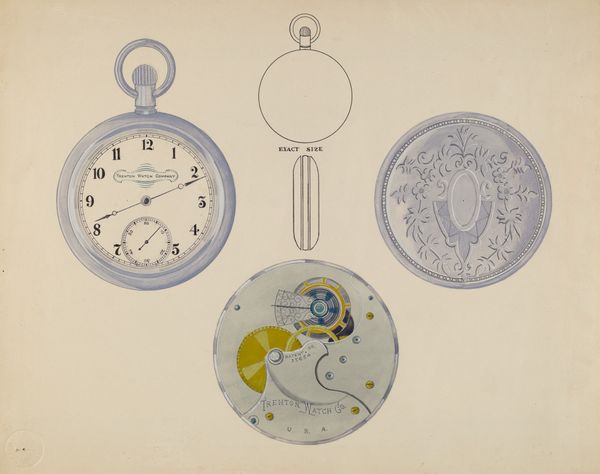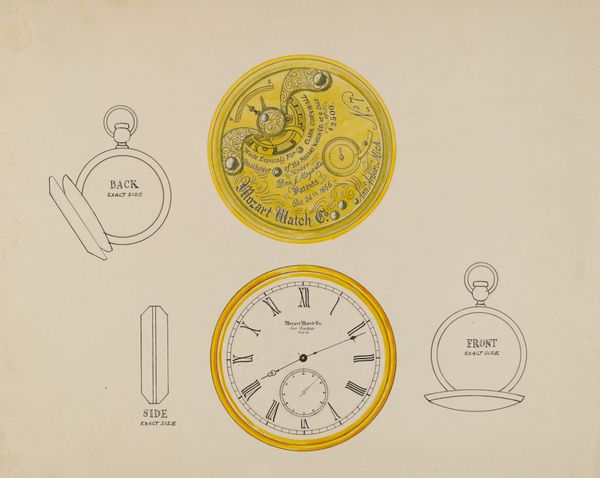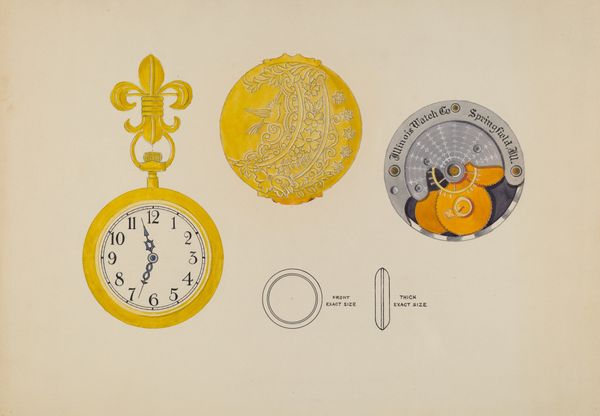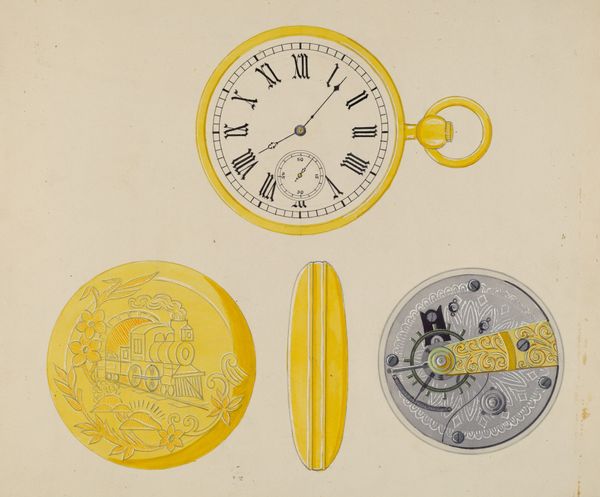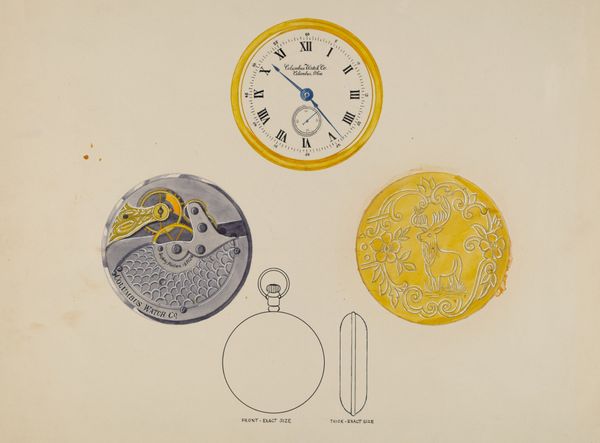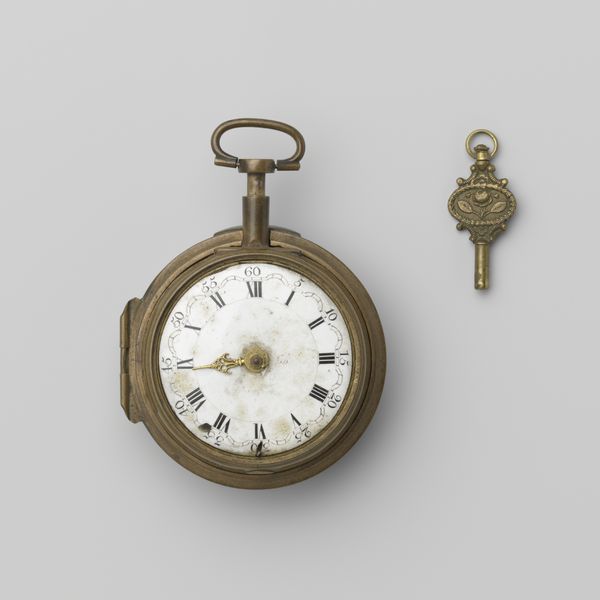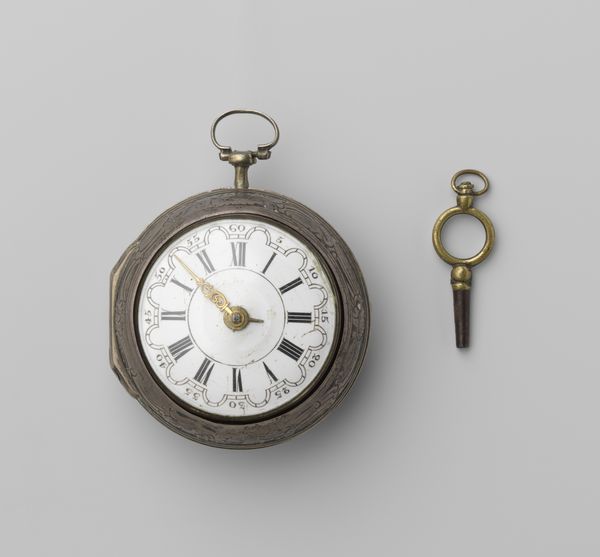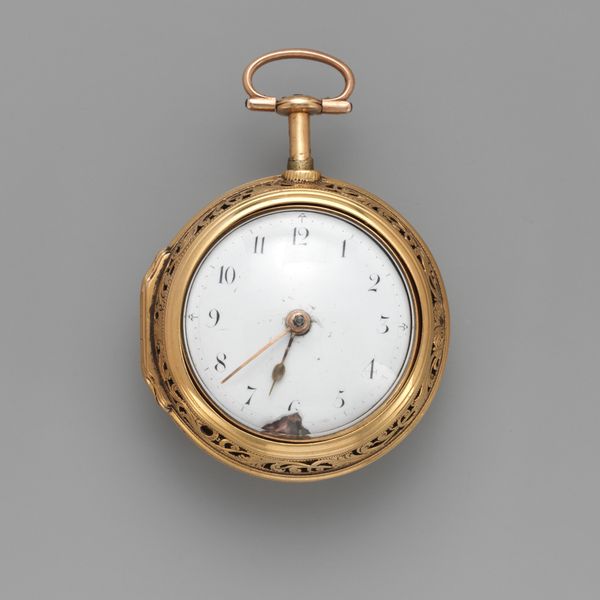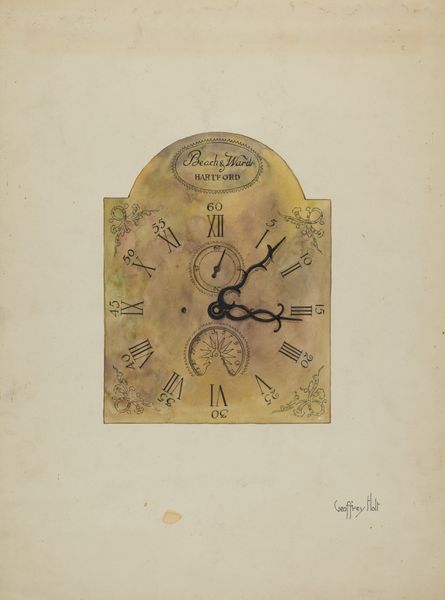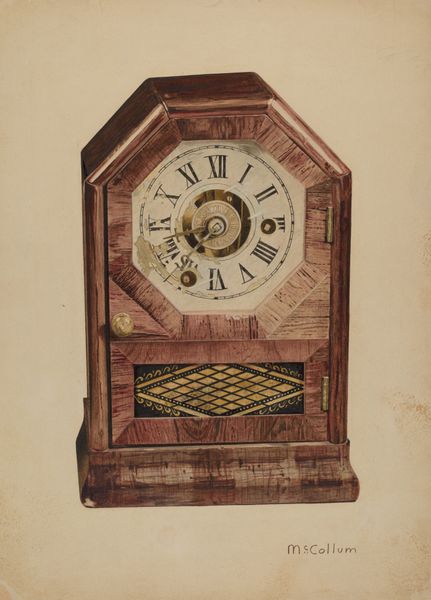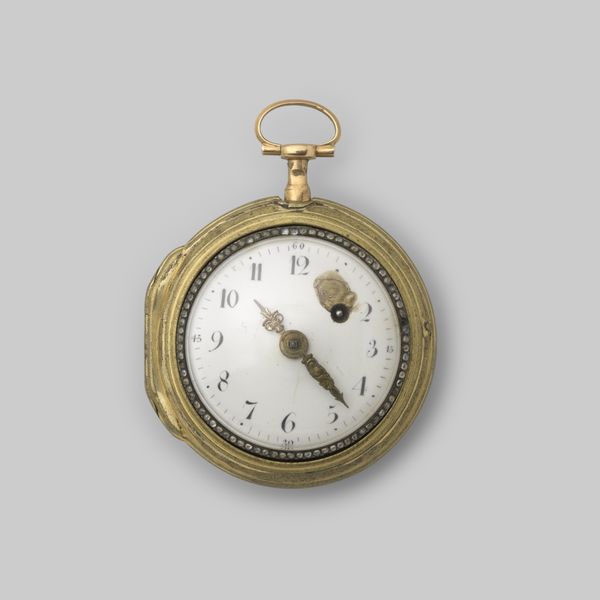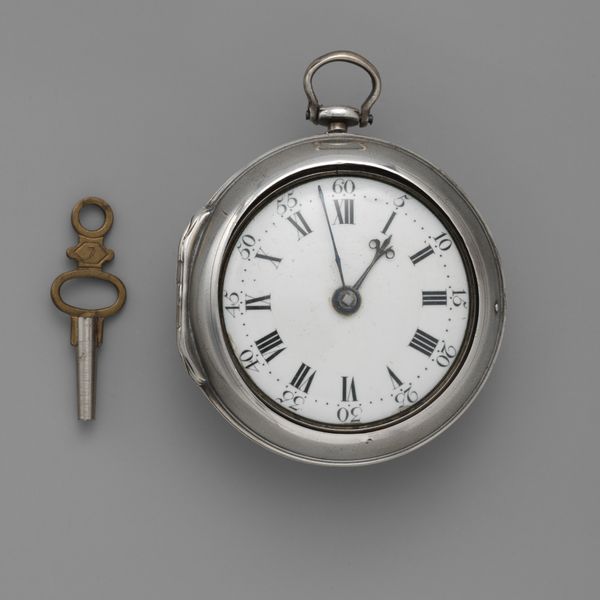
drawing
#
drawing
#
academic-art
Dimensions: overall: 24.9 x 35.3 cm (9 13/16 x 13 7/8 in.)
Copyright: National Gallery of Art: CC0 1.0
Editor: Here we have Harry G. Aberdeen's "Watch Dial and Frame," made around 1936. It's a drawing depicting the inner workings and the face of a pocket watch. I’m really struck by the detail, but I wonder what was Aberdeen trying to communicate by rendering this mechanical device in such a precise way? What’s your interpretation? Curator: Considering a materialist approach, this drawing points towards a critical examination of production and labor. We see a beautiful object, yes, but the exploded view invites us to consider the process involved in crafting something like a pocket watch. The artist may be asking us to reflect on the physical labor of manufacturing processes. Editor: So, by showing both the internal mechanism and the polished exterior, he's drawing our attention to the different stages of creation? The contrast is quite stark. Curator: Exactly. Note the academic style; precise rendering elevates the "lowly" labor involved in crafting what became luxury commodities. Also, consider the date, around 1936 – right in the midst of the Depression. The focus on a meticulously crafted object can reflect social concerns of value, utility and labor’s role within the economy. It asks "how are we measuring value here?" Editor: That’s fascinating! It challenges the notion that only traditional fine art subjects, like portraits or landscapes, are worthy of artistic representation. Curator: Precisely! It breaks down traditional boundaries between "high art" and "craft." Furthermore, think of the materials involved: brass, steel, enamel - and the skilled labor that transforms raw material into a valuable object signifying status and measuring our very lives. Editor: I never thought of it that way. It makes you wonder about the social context of owning such a watch. It's more than just telling time; it represents access and luxury. I guess there is a connection with the craftsmanship itself and how the consumer is interacting with the object itself, thank you. Curator: Exactly, and our relationship with these sorts of technological advancements as well. Now, what did *you* learn?
Comments
No comments
Be the first to comment and join the conversation on the ultimate creative platform.
